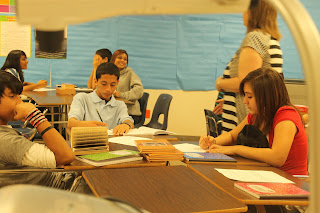View Finder- is what the photographer looks through to compose, and in many cases to focus, the picture
Rangefinder camera- is allowing the photographer to measure the subject distance and take photographs that are in sharp focus.
Parallax-is an apparent displacement or difference in the
apparent position of an object viewed along two different lines of sight, and is measured by the angle or semi-angle of inclination between those two lines
Roof Pentaprism- is a five-sided reflecting
prism used to deviate a beam of
light by 90°
Inside of a camera.
Aperture- A space through which light passes in an optical or photographic instrument, esp. the variable opening by which light enters a camera.
Shutter-A device that opens and closes to expose the film in a camera
Exposure-The action of exposing a photographic film to light or other radiation
Depth of field-The distance between the nearest and the furthest objects that give an image judged to be in focus in a camera
F-stop-A camera setting corresponding to a particular f-number
Focal length-1.The distance between the center of a lens or curved mirror and its focus 2.The equivalent distance in a compound lens or telescope

Switching between manual and auto focus is controlled on the lens as well as the image stabilizer switch. On the camera body you can see the lens lock release. At the top right you can see the AE/FE lock button that seconds as the index key when in Playback mode, and next to that is the AF point selection button that seconds as the magnify button when in Playback. Underneath of these two buttons is the small speaker for audio playback. To the left (right of the LCD screen.) we can see the AV/Exposure compensation button, which allows you to switch between shutter speed and aperture values in Manual mode, or exposure compensation in Program mode. When in playback, this button acts as the delete button. Next is the Live View/Movie shooting button. Pressing this button will enter Live View mode when in a still image mode, or will Start/Stop video recording when the mode dial is set to Movie mode. Below that is the Quick Control button for the T3's shortcut menu, which is also used to access the Direct Print function while in Playback mode. To the far right of it you can see the DISPlay button, which controls the amount of information shown on the LCD screen. Continuing on down, we have the 4-way controller, which has several jobs. These include navigating the menu system, scrolling inside an enlarged image in playback mode, and a quick recall of specific camera functions. Pressing "Up" will display the ISO settings, "Right" accesses the AF mode, "Down" gives access to the White Balance modes, and "Left" toggles the drive mode (burst/self-timer). Lastly we have the Menu and Play buttons at the bottom.















